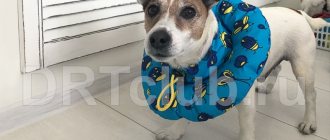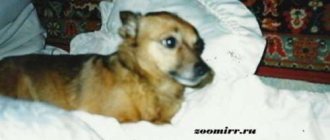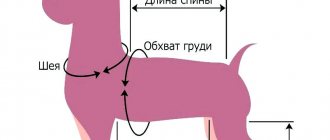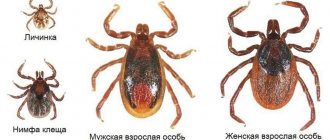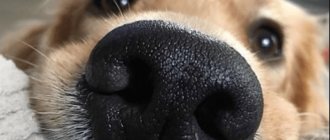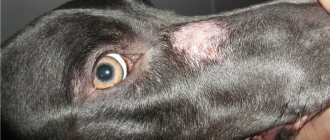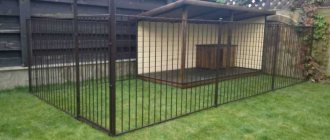There are many situations when you may need a cone for a dog's neck. After all, animals, like people, are susceptible to various diseases, injuries, and operations. But unlike a person, a dog does not understand that the wound cannot be scratched, licked or disturbed in any other way. Otherwise, there is a risk of infection of the body. To discourage this behavior, a special collar was developed.
Protective Barrier for Dogs
What is an Elizabethan collar
The Elizabethan collar was named after the starched lace collars that came into fashion under Elizabeth I. Despite this, the protective accessory also has alternative names: post-operative, medical, and veterinary cones.
The essence of the design
The protective product resembles a truncated cone. It is secured to the neck using the narrowest part, thereby isolating the animal’s head. This position prevents licking and scratching.
Purpose
Most often, a protective collar for dogs is used after surgery (cupping, castration, sterilization). It limits access to the sutures, facilitating their healing.
In addition to surgical intervention, there are other indications for wearing the accessory:
- trimming the claws of naughty pets;
- treatment of allergic reactions and dermatitis with severe itching;
- the presence of injuries and burns, as well as diseases of the eyes and ears;
- treatment with acaricidal and other toxic drugs;
- swimming, fraught with accidental ingress of water into the ears;
- false puppiness, accompanied by frequent licking of the nipples.
Thus, wearing an Elizabethan collar makes it easier to tighten stitches and heal the skin after various diseases, and protects against poisoning and accidental infection in wounds.
Features of the protective structure
DIY dog house: drawings and dimensions
A collar is a cone or cap, the top of which is truncated, and is usually attached to a collar or tied around the neck. The pet cannot turn its head, lick itself or chew. Also, he will not be able to reach his head with his paws.
Note! The collar does not interfere with drinking and eating; it’s another matter when dogs refuse food while wearing the accessory. Then you have to temporarily remove it.
Types of collars for dogs
Dog neck cones are made from different materials. Each of them has its own advantages and disadvantages.
Fabric
The fabric construction is hypoallergenic, waterproof and reusable. Among the disadvantages are a poor viewing angle and low strength. The accessory wrinkles easily, so if the dog really wants to, he can quickly get rid of it.
Plastic
A product made of transparent plastic is a classic option with a minimal price. Its main problems are its short service life and loud noise when in contact with other surfaces.
Inflatable
It differs not in material, but in shape. Resembles a life preserver, providing a very good viewing angle. Suitable for animals with short legs and neck.
Product options and their features
DIY dog bed: how to make
There are several options for dog neck collars, from which you can choose the most suitable one:
- Soft. They are easy to use, do not interfere with the animal, and are comfortable to eat and sleep in. Such collars do not make frightening sounds when they hit, for example, the floor and walls. But they are not suitable for large dogs.
- Inflatable. They are easy to transport and do not interfere with the animal. Suitable for pets with short limbs.
- Plastic. Such collars are inexpensive and accessible and are sold in every pet store. They are transparent, thanks to which the animal sees everything that is happening around them, and are easy to clean. But they are quite noisy, which often frightens dogs.
The plastic collar is inexpensive but comfortable
Criterias of choice
For comfortable wearing, it is important not to make a mistake with the size and appearance. These points need to be decided in advance, since in most cases fitting is not provided.
Size
The size determines the reliability of the fixation and the comfort of the animal. The neck girth and cone height will help you make the right choice:
- 20-26 cm and 7.5 cm – XS-S;
- 25-32 cm and 10.5 cm – S;
- 30-37 cm and 12 cm – SM;
- 36-43 cm and 15 cm – M;
- 44-53 cm and 21.5 cm – L;
- 50-58 cm and 25 cm – L-XL.
The longer your pet's neck, the higher the structure he will need. XS-S is usually used for puppies, S and SM for small breeds, M for medium breeds, L for large breeds, and L-XL for giant breeds.
Type and clasp
When choosing a type, you need to take into account not only the parameters of the neck, but also the location of the painful area. High barriers prevent scratching of the face, and low barriers prevent scratching of the back.
The material will have to be chosen by trial and error, since each animal has its own preferences. You can choose only fasteners to suit your taste: plastic clips or Velcro.
Manufacturing process
Before creating a pattern, you need to measure the girth of the dog’s neck and the length of the head. Then you need to take the material from which you plan to make it.
Step-by-step instructions for creating a pattern:
- A dot is placed in the center of the prepared material; you will need to draw three circles.
- The radius of the first is found as the ratio of the neck circumference to the number 6.28.
- The second one is drawn larger than the previous one. To the radius of the previous one you need to add a second value - the length of the head. Measure the resulting number from the center of the circle. This will be the radius of the new circle. You can add a few more centimeters. It is better to make a collar with a margin and, if necessary, shorten it in the future.
- The smallest circle is 4-6 centimeters smaller in diameter than the first. You will need it to make fastenings on the collar.
Then you need to cut out a large circle. Next, draw a line on the product from the center to any point on the resulting circle. Then you need to make a cut along this line. You will get a strip or an unfolded product. Next, you need to cut out the smallest circle and make notches from it to the middle one. They can be folded, attached to the base, and threaded through them, for example, a lace.
From a plastic bottle
For your dog, you can make a protective cone from a bottle that holds five liters of water.
How to make a dog collar with your own hands:
- Cut a plastic strip and fold it into a funnel shape.
- Fix the edges, they should fit snugly against each other. To do this, use tape or adhesive tape.
- To tie the collar, you need to make several holes in the plastic using an awl. All that remains is to thread the lace through the holes.
A bottle collar is very easy to make
From cardboard
The cardboard dog collar can be made permanent, then you need to make a pattern with two radii. If you want to periodically remove it, you will have to make loops by drawing a small circle.
From fabric
A post-operative dog collar can be made from fabric. You need to choose a cotton base and a seal. Felt or non-woven fabric will do. Next, you need to prepare two identical parts from soft fabric and one identical piece from dense fabric. The latter needs to be sewn inside. To fasten the collar, it is convenient to attach Velcro.
From foam rubber
A soft collar can also be made from foam rubber. In addition to the material itself, you will need fabric that will be on top.
Manufacturing procedure:
- Cut a circle from a sheet of foam rubber.
- Prepare two pieces from fabric. They need to be sewn together along the outside.
- Turn the product inside out, place foam rubber inside and sew it up along the inner diameter.
- Make a part that resembles a belt.
- Prepare two long strips of fabric that will be sewn to the base of the collar. They will later be used for the lace.
- Attach the strips to the almost finished product and connect them to each other. Leave slits on the side where a cord is inserted to tie the collar to the collar.
Inflatable
Inflatable collars can be purchased from veterinary pharmacies. They are convenient if the dog travels a lot with the owner. The materials from which they are made do not cause allergies in pets.
Knitted
A knitted collar requires a base. You can prepare two identical parts and sew them, for example, on top of cardboard or plastic. It will work out in the same way as in the case of a fabric collar, using felt as a sealant.
How to put a collar on a dog
After purchase, you can begin direct use. Correct donning will make subsequent use easier and will have a beneficial effect on the final result.
Sequencing
After the operation, the animal is dressed by the veterinarian, and in all other cases by the owner himself. To do this, just follow the following algorithm:
- Prepare the product and secure the pet in place - alone or with an assistant.
- Place the cone around your neck and secure with clasps.
- Check the seal with your finger. It should fit freely between the neck and the accessory.
- Praise your pet and treat him to a treat.
If the situation does not require urgent use, take care of training. This will make subsequent wearing easier.
How to accustom an animal to a cone
Show your pet an unfamiliar object and let him sniff it. Once you are sure there is no fear, put it on and distract your dog with food or play. Take the product off and on until the dog gets used to it. Usually the adaptation period takes 2-3 days.
What to do if the dog takes off the cone?
If adaptation is delayed, then there is a high probability that an error was made with the size or material. Try choosing a model with a tighter fit - or replace noisy plastic with fabric.
Terms of use
In order for a post-op dog collar to perform its task as effectively as possible, it must be used correctly. The main problem that owners face is the dog’s reluctance to wear a collar, since the thing is new and uncomfortable. At the first attempt to put a barrier on a pet, the owner encounters active resistance from the dog (the animal may growl or bite the hand). Even if you managed to fix the collar, the dog will certainly try to remove it and will become nervous and angry.
To speed up and facilitate the adaptation process, you need to prepare the dog in advance. This option is suitable for those cases when you do not urgently need to put on a collar. For example, before surgery.
Procedure:
- The pet needs to be shown the item and allowed to sniff it.
- Prepare the item for use (assemble, inflate, test fastenings, etc.) and demonstrate it to the dog again.
- Try on the product and make sure that the parameters are selected correctly - the collar does not press, does not fall off, or rubs the skin.
- Distract your pet with play, attention or food. Under no circumstances should you leave an animal unattended for a long time.
- The barrier should be periodically removed and put on again, each time extending the period of wear.
- When the funnel is removed, you must carefully monitor the dog's behavior and do not allow it to lick or scratch the wound.
On a note! Most often, dogs quickly adapt to new “things” and come to terms with the presence of a protective collar. If the pet refuses to eat, then the protection must be removed during feeding.
The collar is secured on the neck with Velcro or special strips that are attached to the collar.
Indications for wearing a neck brace
Such a device may be indicated for the following diseases:
- cervical osteochondrosis;
- torticollis in newborns;
- fractures of the vertebrae of the neck;
- neuralgia;
- radiculitis;
- myositis;
- spondyloarthrosis.
The bandage has also proven itself to be worn during the postpartum period.
The use of the Shants splint is recommended for various diseases of the cervical spine
Here are the main indications for which the wearing of such a “device” is prescribed. It can also be recommended by a doctor, for example, after serious injuries, in which it is important to maintain the correct position of the cervical spine.
Treatment of osteochondrosis
Osteochondrosis is a common disease that represents degenerative changes in the intervertebral discs - they are deformed and “pinches” the blood vessels and nerve endings located in the spine. Most often, the cervical region suffers from this.
The treatment of osteochondrosis should be approached thoroughly, with the consultation of an experienced neurologist. The doctor collects anamnesis, finding out whether osteochondrosis is the only disease. Most often, associated problems are discovered that require immediate treatment.
In addition to wearing a bandage for the treatment of osteochondrosis, doctors also prescribe medications
The neurologist prescribes serious drug treatment, which affects the source of the disease.
Your doctor may prescribe the following medications:
Correct use of the orthosis
The collar bandage is worn only on the naked body, while the chin is placed in a special recess on its upper part. Next, the bandage is fastened with Velcro, which are located behind the orthosis. A correctly worn bandage does not restrict movement, does not squeeze, and in no case interferes with the patient’s breathing. The time for using the collar is prescribed only by the doctor; for example, for osteochondrosis, the bandage must be worn for two hours with a rest of 30 minutes. Any complaints when wearing a bandage should be alarming and immediately discussed with a doctor. Typically the recovery period takes 1 month.
It is important to wear the bandage for a certain amount of time, which will be determined by the doctor.
Fact. The bandage is a highly effective remedy that can relieve headaches, fatigue, muscle tension and other consequences of osteochondrosis.
Advantages of a collar orthosis
Several reasons not to doubt the effectiveness and safety of such a device:
- acts as a limiter for neck movements, therefore preventing its deformation and facilitating treatment;
- used for prevention during osteochondrosis and other neck problems;
- is an effective additional remedy in getting rid of osteochondrosis, in addition to medications and massage;
- approved for use even by newborns;
- There are several types of bandages, so it is easy to choose a device individually for each patient;
- the materials used for the production of the bandage are completely safe and therefore cannot provoke an allergic reaction;
- any degree of severity of osteochondrosis can be cured with the help of a neck brace;
- a neck brace not only relaxes the neck muscles, straightens the curvature of the vertebrae, improves blood circulation and normalizes the functioning of this part of the spine, but also eliminates possible deformities;
- The bandage is easy to use thanks to its simple design.
Bandage has many advantages
Historical excursion
Why did the protective veterinary collar receive such an interesting name? The fact is that in the 60s of the twentieth century, veterinarian Frank L. Johnson noticed an interesting similarity. The barrier structure that prevents the animal from reaching the wound is very similar to the collars of the dresses of the ladies of the court during the time of Queen Elizabeth of England.
Puffy starched collars were very popular at that time. They came to England from Spanish fashion and were tight, starched structures with numerous folds. They were not sewn onto the suit, but were put on over it and tied tightly.
By the end of the 16th century, collars had reached incredible sizes. The width of about 30 cm greatly limited the view and made it difficult to turn the head.
Soft corset - help with pain
If neck pain is a frequent occurrence, then you need to have a soft neck brace in your home medicine cabinet, which will be an assistant in the following situations:
- the appearance of sharp pain, which may be a consequence of myositis - a “lover” of drafts and open windows. In this case, inflammation of the neck muscles occurs, discomfort and high temperature appear;
- During long periods of sedentary work, severe muscle tension can occur, which also provokes severe pain.
For short-term back pain, a soft orthopedic collar will help, which is useful to have in your first aid kit.
If such discomfort occurs, it is recommended to wear the bandage for half an hour: the neck will rest, the condition of the blood vessels will return to normal, and the pain will go away. It is not necessary to discuss this use of the device with your doctor, but it is important to remove it in time so as not to worsen your condition.

